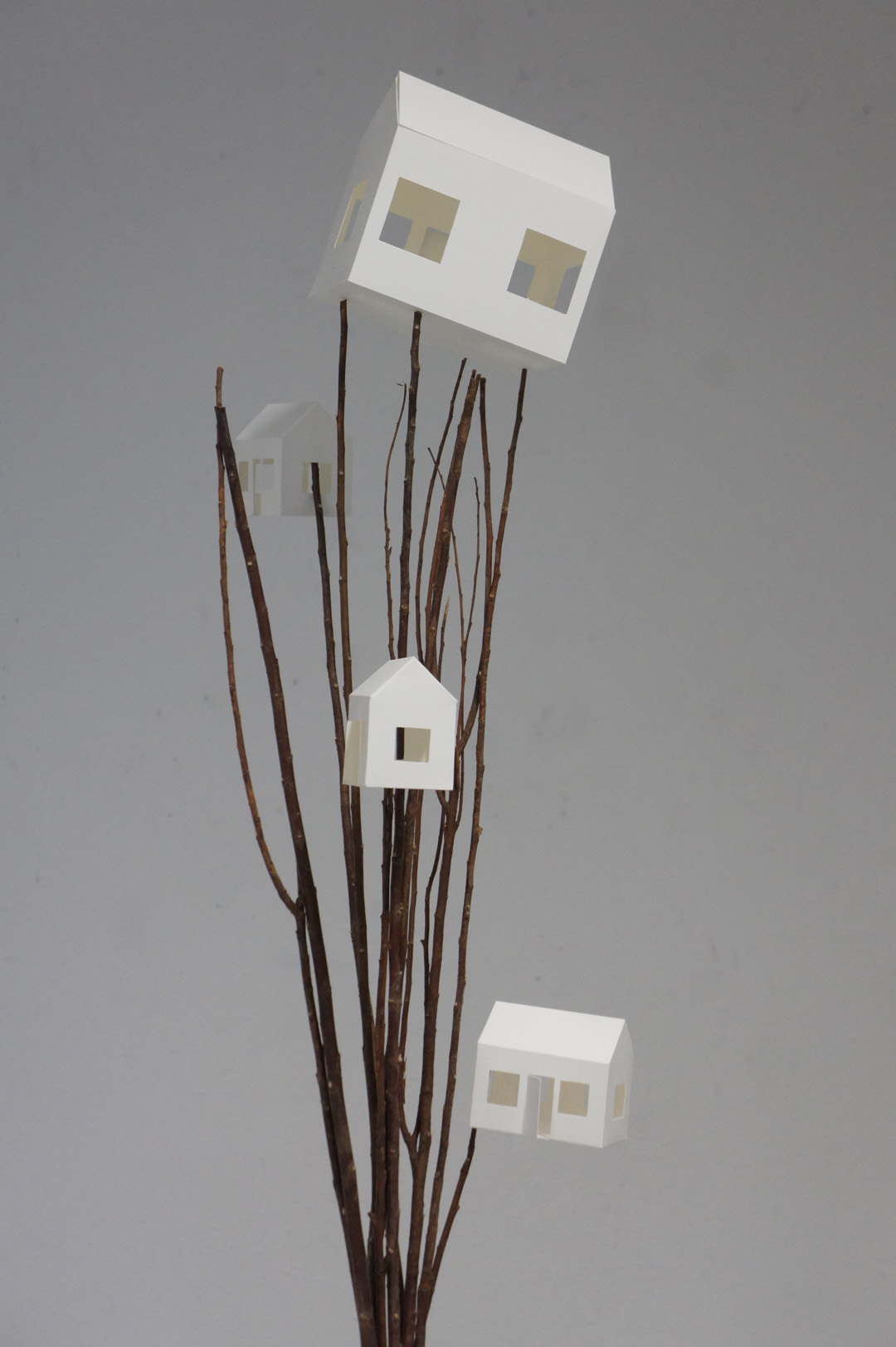
Once Upon the Cotton Fields
A Cartography of pain
In the development of “ I question the loss of the physical home and how this tragic event can create another location, or illusory fantasy place in our mind. A ‘mental home’ rebuilt through memory. This installation is conceived to create relationships between space and emptiness, transparency and structure, fragility, balance and strength. The choice of materials, natural branches and handmade houses, evoke as well the relationship of man to the environment, and the way our most intimate place, our ” home”, as a physical dwelling, lays on the fickleness of nature.
"Once upon the cotton fields” is inspired in the Armero, Colombia 1985 Tragedy.
A town of stilt houses occupies the exhibition space. Small white paper houses lay on the tips of long natural branches such as cotton flower stems that grow and flourish out from the ground. This floating village gives both a sensation of fragility in equilibrium when walking through and around it.
Because the branches exceed the height of the average viewer, the installation has a straight way physical impact on him/her who can actually penetrate and inhabit it.
The natural branches are assembled together in a sort of tripod base and stand in complete steadiness without fixation to the ground. The paper houses on upper the parts of the bases are placed on a stable position and are not fixed to the branches either.
Carefully handmade out of cotton paper, the two-slope roof houses follow the architectural stereotype and are simple and recognizable shapes of dwellings. The neutral form and color were thought to evoke a “home” a ‘beloved dwelling’, in its most common form. The various sizes of the houses create as well, a dynamic composition in space and their open doors and cut out windows, provoke a correlation between the inside and outside of these micro-spaces and the exhibition space as a whole.
The houses of the white floating village, an imaginary place, become a metaphor of the house to all; A place where our thoughts and personal memories dwell, a symbol of a house for all of us regardless of who or where we are.
The frangibility of this graceful installation recalls the instability and vulnerability of the physical and metal places, intimate houses and refuges that are dear to us. These places, imaginary, real or poetic ‘homes’, live in us. Their loss creates in us the deepest nostalgia. A way to come back is through the means of memory and recollection; a poetic reconstitution of what is gone.
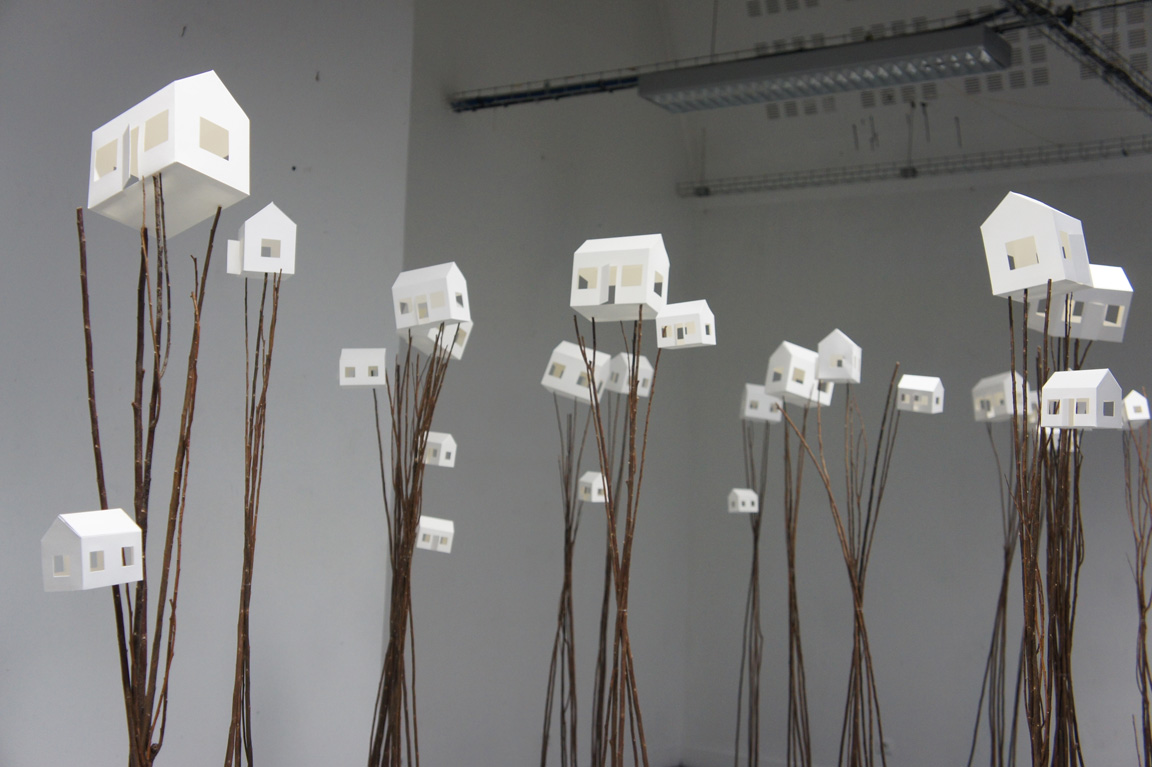
The White City
Armero was located on Colombia’s most fertile agricultural region. The mineral deposits produced by the dormant volcano, the Nevado del Ruiz, enriched its soils. “Colombia’s White City”, Armero was the main cotton producer in the country.
30 years ago, on the night of the 13th of November 1985, a terrible catastrophe occurred. The sleeping volcano awoke and an eruption took place, leading to an avalanche of water, mud and rocks that erased without any warning the entire town of Armero from the face of the earth. More than 20,000 people lost their lives, many were injured, and many others are still missing.
This natural and human tragedy was a traumatic event for Colombians and many debates have been raised regarding the government’s responsibility in preventing the heartbreaking human loss by evacuating the whole population on time.
After the tragedy, only an immeasurable desolate territory could be seen when overflown. The vast area where the city used to be was completely obliterated. As time passed by, the survivors and the mourning families started to visit the site. Within the ruins of dwellings and buildings, the survivors tried to locate their homes and redrew the axes of the main city roads. They situated the Cathedral, the central park and the places where other important downtown shops used to be. They started placing cenotaphs where their houses used to stand and tombs where they believed their dead would be buried. Armero became a ghost town with scattered graves, ruins, and memorials.
As the years have passed by a strange and painful cartography of Armero was been recreated. A new symbolic city called ‘The Camposanto’, a holy field, appeared. Nevertheless, as Armero’s tragic story fell into oblivion, nature started taking over the vestiges of the city and swallowed part of its memory along with it. Marking the inevitable passing of time, as life continued, trees and high wild grass inhabited the few remains of dwellings.
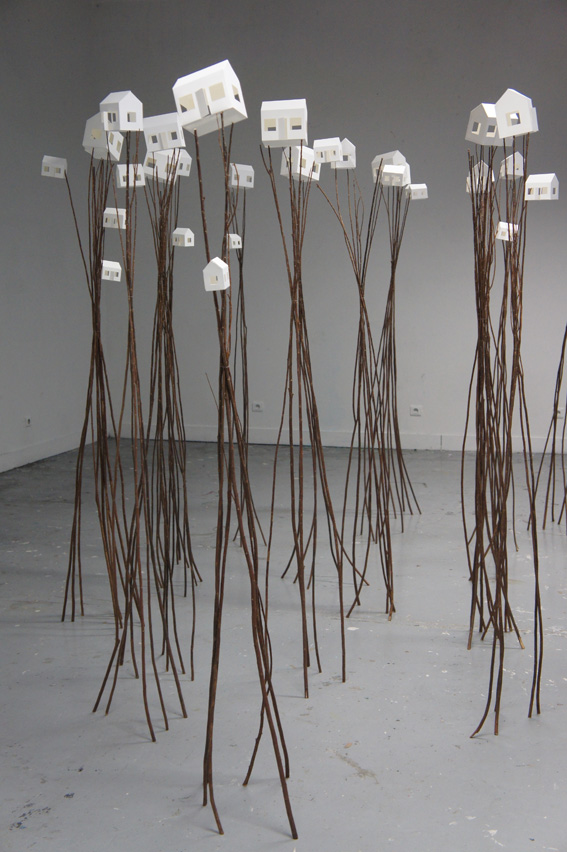
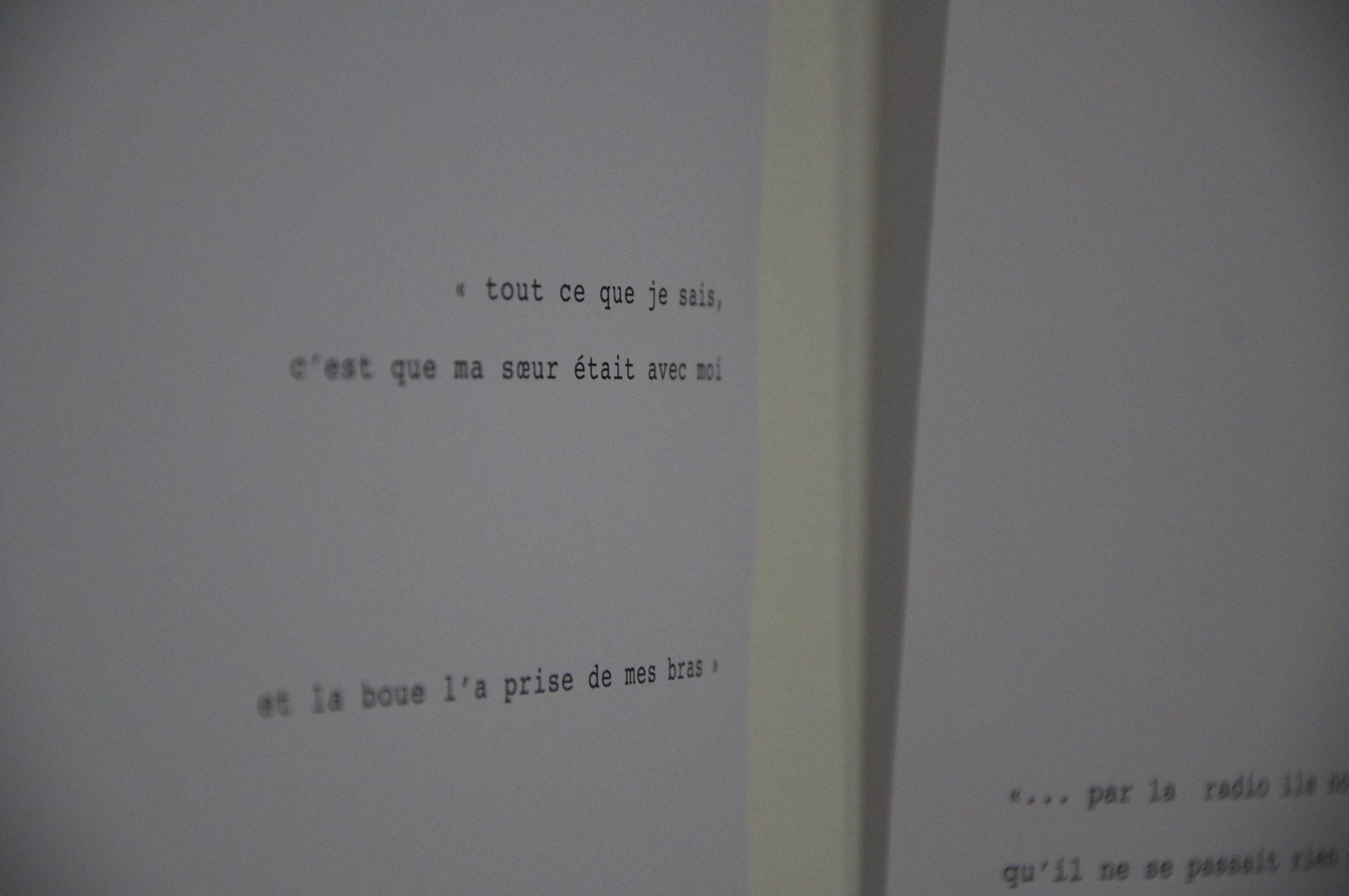
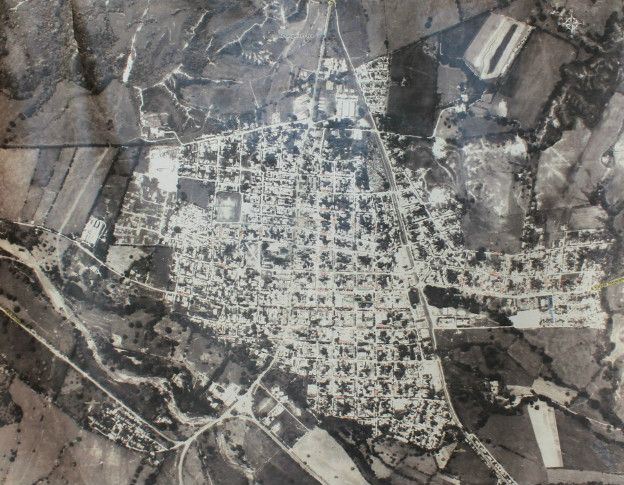

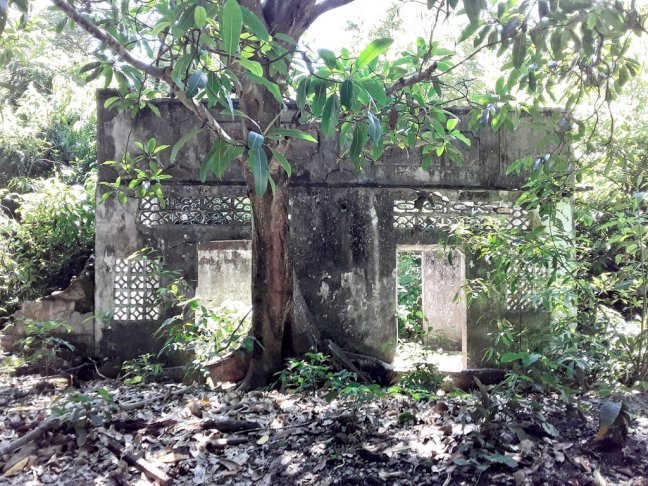
My maternal grandfather is one the survivors of the Armero’s tragedy. The loss of his house and hometown and in those who once lived in this vanished ghost city has been inspirational to this project.